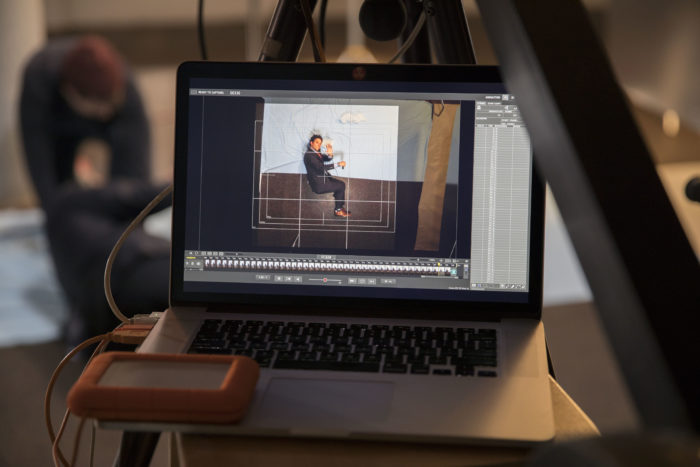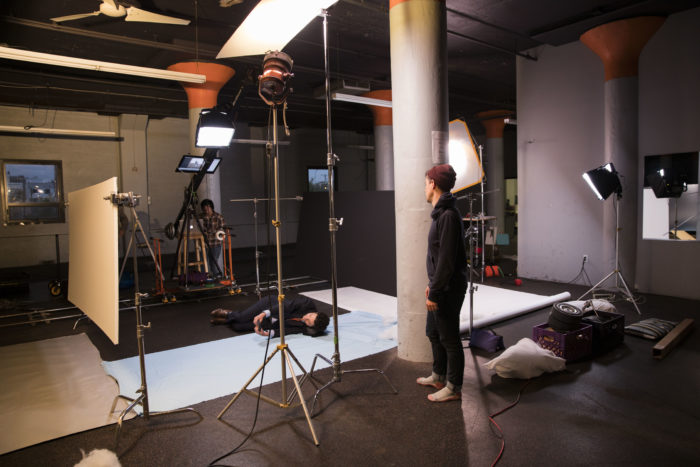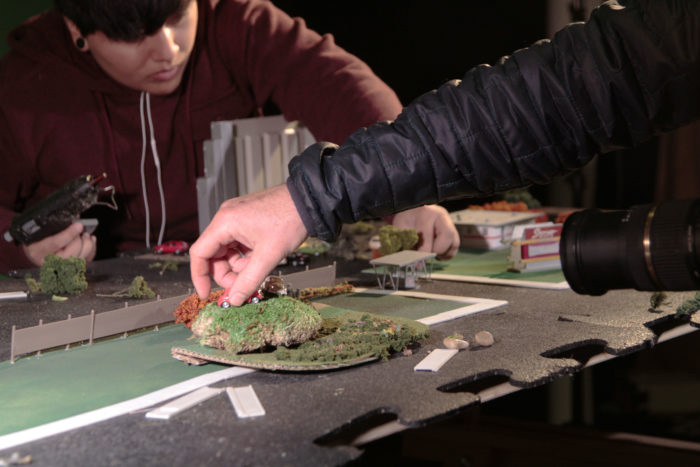When Vine came to be at the beginning of 2013, the six-second video app quickly became a fresh new platform for creative people to showcase their stories. As Vine began to explode throughout the next year, the app tried to figure out how to curate the content their fans wanted to see. The result was the “Popular Page”, which used a formula to showcase what were the most popular vines of the day.
Meanwhile, a social media averse waiter in Philadelphia had been dabbling in creative advertising on his own, and when Vine came out, he was one of the first creators on the app to innovate with the editing techniques the app offered.
“I didn’t really like being on my phone all that much. I just was not a big digital person,” said Peter Heacock. “Vine came out, and I was fascinated by it. Then I had one vine go sort of viral, and from then on I was just hooked.”
Soon after, Heacock had one of the most popular videos in Vine’s short history, and was introduced to a world of creators who, like him, were searching for a platform to express themselves. Peter’s niche was stop-motion.

These days, Peter has his own studio. Set up in the old East Falls Gym, Heacock and his team of two or three on a given day stage and execute their commercials. The set we saw was filled with miniature cars at a miniature drive in. The result conveys a big picture with great visuals and design, but to see it in person is underwhelming. That’s part of the allure. Something so fantastic produced on such a small stage.
Heacock honed his skills on Vine. An app that allowed to freely explore his filmmaking hobbies, and experiment with effective marketing in a social setting.
Because a vine only lasted six seconds, one of the easiest ways to manipulate the app was to record for split seconds to allow for as many frames as possible. Heacock then used the in phone settings to use the app in the most efficient way possible.
“You could use all these different ways to make videos, and that blew my mind. I loved that,” said Heacock, trying to put into words what made the app so unique. “Everyone was on an even playing field, everybody had the same amount of time. If you wanted to make magic you had to put in the time.”
Heacock drew inspiration from old filmmakers such as George Melies to influence his story-telling. He used math-on-action cuts, played with perspective, flash-edits, or just old in camera special effects, which had become a popular style on Vine.
“I began to figure out how to go viral,” said Heacock. “I was chosen as editor’s pick, which gave me a big audience, and I made a lot of friends on the app. Through those friends we made a collective, and that collective was called Unpopular Now.”
Unpopular Now was a tongue-in-cheek reference to the “Popular Page”, which was created to promote creators on the app as a group. It didn’t take long for this new collective to get noticed, and soon Twitter came with an offer to advertise.
Vine clearly represented a robust consumer market for advertisers to capitalize on. The audience was younger, and offered a very short-form platform to reach an audience that was more reluctant to sit through longer ads. Unpopular Now offered these advertisers a proven group of creators that could connect with their target audience.
Clients included Target, Best Buy, and AT&T, but once the cat was out of the bag, Unpopular Now was working against other collectives that had arisen from social media platforms. Which was fine, according to Heacock, because to him the competition could just be another collaborator.

Heacock was sad to see Vine get shut down, but admitted that he thinks they missed out on the sharing that’s provided by Instagram and Snapchat.
“It was right there,” said Heacock. “Instead of doing video messages to people, why couldn’t you just string a bunch of vines together. Then you could jump Instagram and jump Snapchat.”
Heacock still carries the brand he started on Vine however, and currently operating in East Falls just across the street from Expressway, his team is now called UnPop. Since the end of Vine, Peter has continues to create short-form social media and broadcast advertising for brands, including a stop-motion campaign for Volkswagen.
Peter’s studio in East Falls is small. As he prepared to film the Volkswagen spot, his painstaking process was on display. One that includes hours of hard work crafting and prepping his props, for a 30 second payoff.
Heacock’s background with the six-second app is clear as he shows off his process. In so many ways, Vine lent itself to thinking outside the box, using practical effects, and often-times creating the illusion of stop-motion photography. Now, Heacock takes those skills he honed on a free app, and puts them to use for major advertisements.

“I’d love to break into the market and pitch for bigger brands for more broadcast spots. That’s a big focus for this year,” said Heacock. “The thing that I have that others don’t is the ability to tell a story in six seconds. You’ll click on Youtube and you’ll skip the commercial in five seconds. I can make the commercial in five seconds.”
Heacock knows he has a place in the advertising market. Practical special effects are his passion, and they’re also visually pleasing. Quick storytelling is also the easiest to advertise effectively, and his Vine background has prepared him specifically for it. And, Heacock says, people really appreciate seeing a commercial that they can tell took a lot of work.
“The handmade quality is a big part of what we do, because we really think that showing the work, people really appreciate that,” said Heacock. “This is our way to not only have fun, to make something look great, but also to really stand out. I always wanted to make special effects, and now I’m actually making them, not just computer images. We want everyone to see how we did it, but we also want people to say, ‘Damn, how’d they do that.’”
Not long ago, Dom Hoffman, the creator of Vine, announced V2. This new and improved Vine would bring some of the elements of the old Vine back, while looking to right it’s mistakes. The details are still murky, but one thing’s for sure, someone who already cut their teeth on the original Vine and experience in an advertising state of mind, could be in a prime position to capitalize. It just so happens that Peter Heacock is that person, and he resides in Philadelphia.